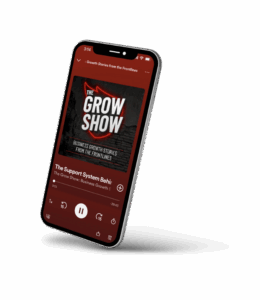Visibility is the key in commercial roofing. You can have the most excellent service in the city, but property managers and facility managers won’t be able to find you online. You’re losing the competition to your rival then. That’s why commercial roofing SEO has become not an option but a necessity. It’s the most critical investment you can make to assert brand authority, generate inbound leads, and own your local service areas on Google.
This playbook walks you step-by-step through creating SEO that drives results. You’ll learn how to boost your Google Business Profile, create service-area pages that rank, optimize your website with proper schema markup, and more. You’re building from scratch or looking to level up on what you’re already doing, this playbook will empower you to turn your website into a lead-generation machine.
Contents
- 1 Why SEO is Important for Commercial Roofers
- 2 Start with Local SEO Basics
- 3 Optimize Your Google Business Profile (GMB)
- 4 Create Dedicated Service-Area Pages
- 5 Apply Schema Markup to Get More Search Visibility
- 6 Set Authority with Content and Backlinks
- 7 Optimize for Mobile and Speed
- 8 Track Performance with SEO Tools
- 9 Steer Clear of Common SEO Mistakes
- 10 Do You Need to Hire a Roofing SEO Specialist?
- 11 Request a Free Commercial Roofing SEO Audit
Why SEO is Important for Commercial Roofers
Commercial roofing is a low-volume, high-revenue business. That is, you’re not getting hundreds of leads per week like with eCommerce or consumer services. Instead, you rely on fewer but better-caliber opportunities. The trick is to get those opportunities to search for you at the right time.
SEO helps do it by:
- Making you visible in map and local search results
- Building trust with decision-makers, owners, and property managers
- Attracting consistent high-intent inbound leads
- Reducing reliance on paid advertising or third-party sources of leads
- Establishing your business as the go-to expert in your service area
And while most commercial roofers think SEO is all about keyword and blog building, what really sets the foundation of your long-term strategy are local SEO, Google Business optimization, service-area landing pages, and schema.
Start with Local SEO Basics
Local SEO is how you end up in the “map pack” when someone searches for commercial roofing services near them. These first three results on Google tend to get most of the traffic, especially for high-intent queries like:
- commercial roofer near me
- flat roof repair in [city]
- TPO roofing contractor [city]
- industrial roof services in [city]
To be the owner of these searches, your local SEO has to be rock-solid. That begins with your Google Business Profile.
Optimize Your Google Business Profile (GMB)
Your Google Business Profile is the foundation of your local SEO visibility. It informs Google (and your customers) that your business exists, is relevant, and can be trusted in your community.
Here’s how to optimize your GMB:
- Claim and verify your profile if you haven’t already
- Use your accurate business name without keyword loading
- Utilize the same NAP (Name, Address, Phone number) on every listing
- Select the right main category, e.g., “Commercial Roofing Contractor”
- Add proper secondary categories, e.g., “Roofing Supply Store” or “Construction Company” if required
- Upload professional photos of your employees, projects, equipment, and office
- Utilize service descriptions and include main commercial services like flat roof repair, metal roof installation, or coatings
- Post weekly updates with project photos, company news, or seasonal offers
- Ask for reviews and respond to every one, especially those that mention commercial work
A fully optimized GMB profile increases your visibility in the maps section, improves your click-through rate, and builds trust with local prospects.
Create Dedicated Service-Area Pages
Most roof companies have one “Commercial Roofing” page. That’s not enough if you need to rank in multiple cities or zip codes. To succeed with commercial roofing company SEO, you need service-area landing pages aimed at each city or region you want to serve.
This is how to do them right:
- Have one page for each city or area, not just one generic location page
- Use the name of the city in the page title, URL, headers, and meta description
- Make sure each page has unique content—don’t duplicate content by copy and paste
- Highlight local projects, partnerships, or testimonials for that area
- Specify the unique services you offer in that city, such as “TPO roof repair in Cleveland” or “EPDM installations in Kansas City”
- Place a local map and use driving directions or landmarks if you need to
- Link to core service pages to enhance site organization
This approach enables you to rank for commercial roofing searches across different cities without violating Google’s content policy. It also gains trust from local customers who want to be assured that you’ve worked within their area.
Apply Schema Markup to Get More Search Visibility
Schema is a data structure that search engines use to learn about your site’s content. It won’t be visible to users, but Google uses it to enhance your listings and make them more likely to display rich snippets or map placements.
In commercial roofing SEO, the most crucial schema types are:
- LocalBusiness – tells Google where your business is located and what you offer
- Service – specifies each roofing service you offer
- Review – refers to your star ratings and customer reviews
- FAQPage – if you have an FAQ page, this snippet can yield rich results
- BreadcrumbList – helps with navigation and sitelinks
Use tools like Google’s Structured Data Markup Helper or Rank Math and Yoast (WordPress plugin) to make it easy to implement schema on your website. Remember to check your pages in Google’s Rich Results Testing Tool to ensure everything is working properly.
Set Authority with Content and Backlinks
Once your technical SEO and local strategy are in place, it’s time to build authority. This is where content marketing and backlinks come into play.
Start with commercial-focused blog content:
- How to maintain a flat roof during winter
- Signs your industrial roof needs replacement
- Commercial roof coatings vs replacement: what’s best?
- Energy-efficient roofing options for businesses
- What to expect during a TPO roofing project
These types of articles help you rank for long-tail terms, establish your expertise, and give prospects a reason to stay on your site.
Second, build backlinks from:
- Local business directories and chambers of commerce
- Commercial property and building sites
- Industry-specific directories like RoofersCoffeeShop or NRCA
- B2B blogs or local business guest articles
- Press releases about large projects or awards
Backlinks from high-authority pages strengthen your domain authority and rank your pages faster.
Optimize for Mobile and Speed
The majority of your business clients will view your site on a mobile phone—either they are at a job site or shopping vendors between meetings. Your site must be mobile-friendly, fast, and easy to use.
Don’t forget:
- Utilize responsive design that works just as well on every device
- Utilize large, clickable menus and calls to action
- Compress images to load fast
- Avoid popups or animations that cause lag
- Test site speed using tools like Google PageSpeed Insights or GTmetrix
Mobile-first indexing is at the forefront of Google’s priorities, so slow mobile performance will hurt your rankings across the board.
Track Performance with SEO Tools
You can’t improve what you can’t measure. Use SEO tools to keep an eye on rankings, track traffic, and track conversions from organic traffic.
The must-haves are:
- Google Search Console – monitor keyword rankings, site speed, and crawl issues
- Google Analytics 4 – view your traffic sources and what your users are doing
- Ahrefs or SEMrush – keep an eye on keyword adjustments, backlinks, and competitor traffic
- BrightLocal or Whitespark – monitor local rankings and citation consistency
- Call tracking tools – route phone leads back to SEO pages whenever possible
Review data on a monthly basis and adjust your strategy according to performance. If certain location pages or services are not doing well, update the content or improve the internal linking structure.
Steer Clear of Common SEO Mistakes
Well-meaning roofing companies also make mistakes that cost them leads. Avoid these common mistakes:
- Utilizing generic images instead of actual commercial work
- Keyword duplication in titles or paragraphs
- Having duplicate content on city pages
- Omitting technical issues such as broken links or loading slowly
- Failure to update your GMB on a regular basis
- Failure to avoid link building or review requests
- Failure to include tracking on forms and calls
SEO requires consistency and attention to detail. Omitting steps or taking shortcuts will do more damage than good.
Do You Need to Hire a Roofing SEO Specialist?
Although some SEO aspects can be done internally, most commercial roofing companies prefer to have an agency work for them that caters to their particular market. The right SEO partner will get you up and running faster, avoid costly mistakes, and keep your time focused on running the business.
An effective SEO partner must:
- Understand how commercial roofing sales cycles work
- Have experience in creating service-area SEO strategies
- Offer technical SEO audits and keyword research
- Help with content creation and GMB management
- Provide transparent monthly reporting and recommendations
- Align SEO KPIs with your lead generation goals
At Abstrakt, we’ve helped hundreds of commercial contractors get found by the right prospects using search. From GMB optimization to full-scale local SEO campaigns, we deliver strategies that bring in measurable results—not just traffic.
Request a Free Commercial Roofing SEO Audit
If your website isn’t ranking as you wish, or you have no idea why you’re not getting more search leads, we can help.
Book a free SEO audit and we’ll show you:
- How your current website is doing in your target market
- What technical issues may be holding you back
- Where you’re falling behind in local SEO and service-area coverage
- How to maximize your Google Business Profile for better map rankings
- Which are the top competitors and how do they differ
Let’s turn your commercial roofing jobsite into a lead generation machine—built to dominate your local market and map pack for the long haul.

Madison Hendrix
Madison has worked in SEO and content writing at Abstrakt for over 5 years and has become a certified lead generation expert through her hours upon hours of research to identify the best possible strategies for companies to grow within our niche industry target audiences. An early adopter of AIO (A.I. Optimization) with many organic search accolades - she brings a unique level of expertise to Abstrakt providing helpful info to all of our core audiences.
- Madison Hendrix#molongui-disabled-link
- Madison Hendrix#molongui-disabled-link
- Madison Hendrix#molongui-disabled-link
- Madison Hendrix#molongui-disabled-link







